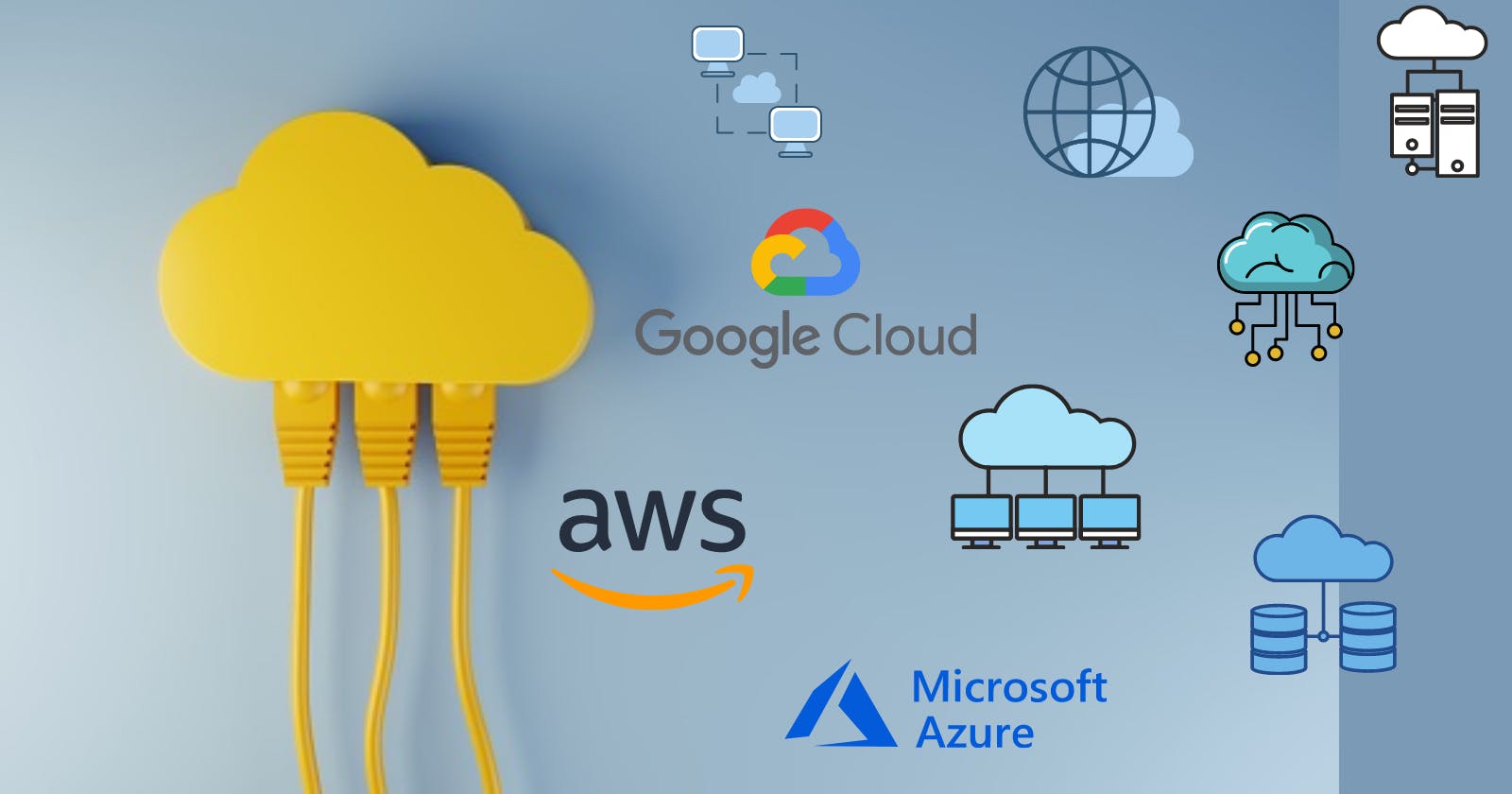Explore the sphere of Cloud Computing
Understand what is cloud computing, its architecture, how it works & delivered
In this blog, an overview of cloud computing is given. This article is not specific to someone from the cloud domain but rather for all because cloud computing is not just a technology, it's a service utility and solution to our increasing demand for the Internet.
Understanding Cloud Computing benefits & demand
As you can see in the below image the computers, pcs we are using today are more advanced and updated in the base of storage and performance. we left floppy & magnetic disks many years behind and keep updating. The goal behind the process is maximum utilization with minimum resources and making the technology faster and reliable .

Cloud computing
- Cloud computing follows the same goal this technology is the updated way of getting maximum utilization of resources.
- Cloud computing is a serverless service. one enterprise using cloud service doesn't need to set up and manage the whole IT infrastructure, they use the resources from the cloud platforms and pay for those resources only so it lowers the expenditures.
- by definition Cloud computing is a service that provides servers, storage, databases, networking, software, analytics, and intelligence—over the Internet (“the cloud”)
Coming to the present, nowadays the demand for the Internet and computers is at its peak. During the covid-19 everything, from education to office work & entertainment moved to virtual mode globally. Many enterprises failed to fulfill the demand with their traditional way of using resources because, without cloud computing streaming, and work collaboration, working with real-time data wouldn't be easy. so cloud computing take a boom in the market. examples of some companies using cloud services are Netflix, eBay, interest, Twitter, LinkedIn, coca-cola, Kroger, Gameloft, and many more.
Drawbacks of Traditional way
In the traditional way Enterprises set up their own data centers which comprise servers, cooling systems, network setup, cable, and more infrastructure which leads to many drawbacks like below.
- capital Expenditure
- Time to set up the infrastructure
- Maintenance Overhead
- Ressource under/overutilization
Architecture of Cloud Computing-
Although In cloud computing also data centers are the base resource like the traditional still it's more efficient and scalable because of the architecture and virtualization. So now let's understand the architecture and the terminologies of cloud computing step by step using images.
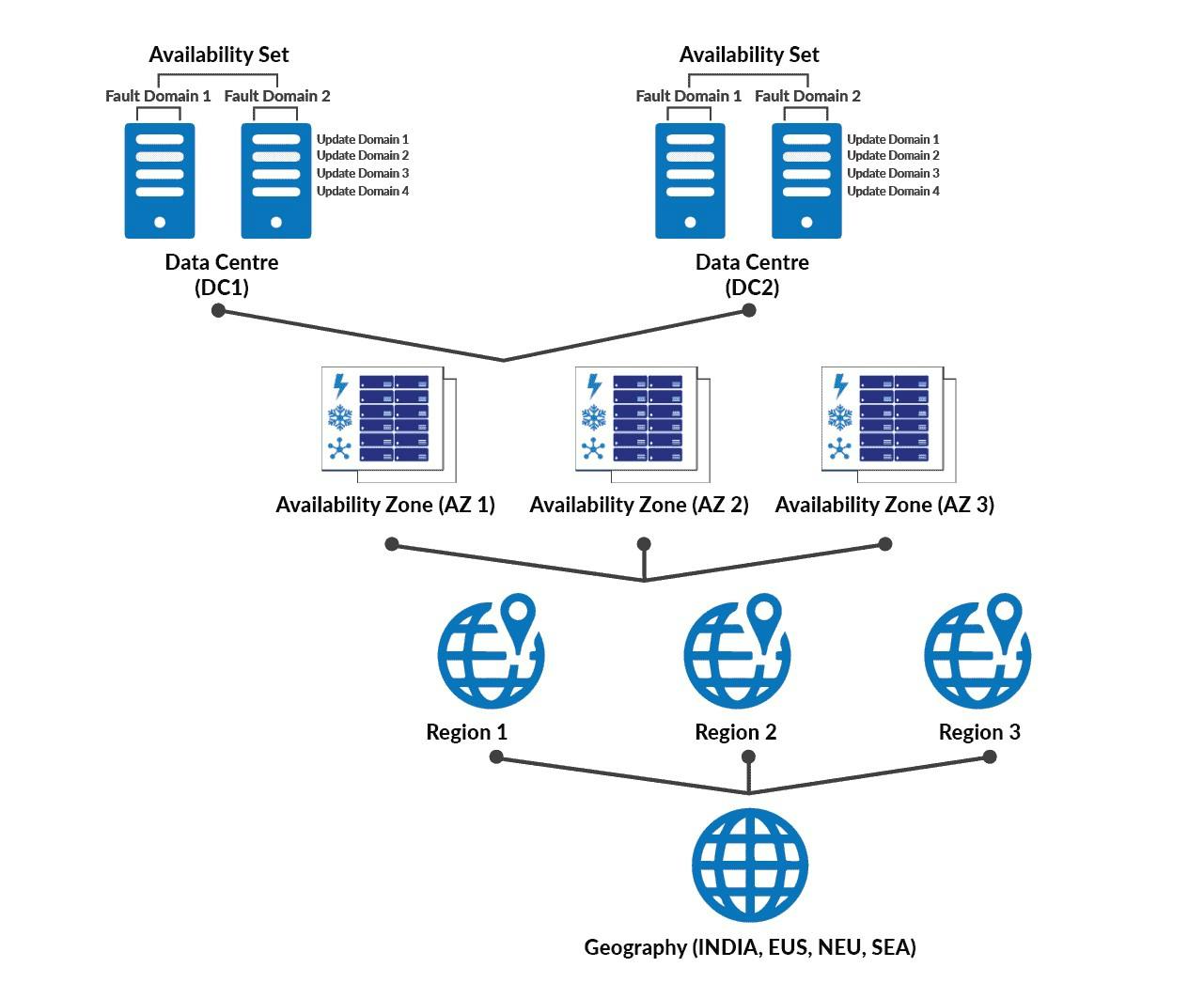
Regions
As we can see in the picture at the bottom level service providers established their data centers around the world in different geographic locations which are called Regions.
Availability zone
Inside the regions, Availability zones are the actual physical locations where the data centers exist or we can say the collection of data centers equipped with independent power, cooling, and networking system.
Now let's get inside a data center server racks to understand how they are grouped.
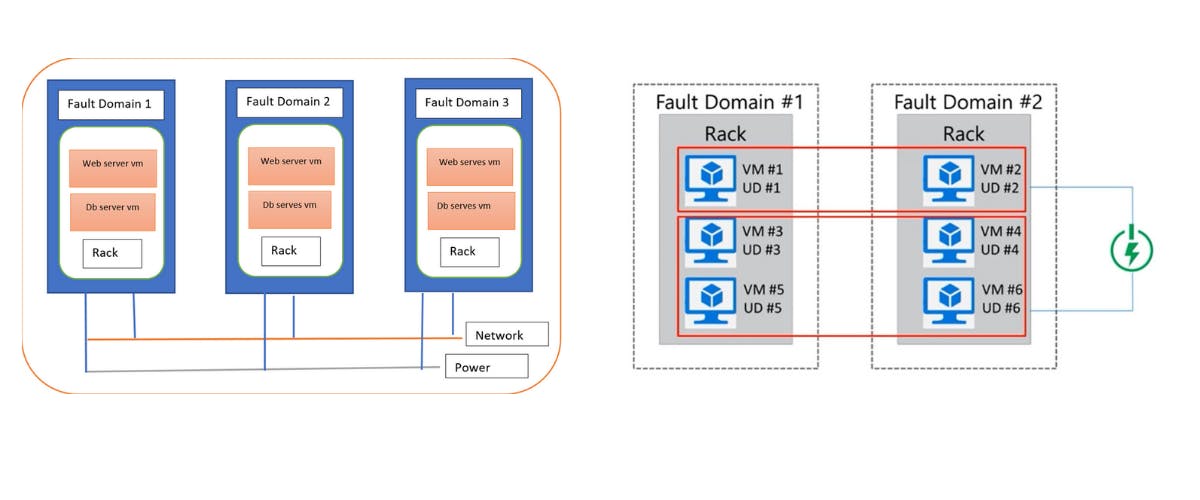
Fault Domain & Updated Domain
Within the data center, server racks are available in each server rack we have multiple machines or servers that we generally see in a server room. each rack is called Fault Domain that shares a common power source and network switch. within the fault domain we have update domain is a logical group of the underlying hardware which undergo maintenance or rebooted at the same time. Updated domain and virtual machines are get updated automatically when a new release or patch comes out. Only one updated domain can be updated at a time to ensure availability.
Availability Set
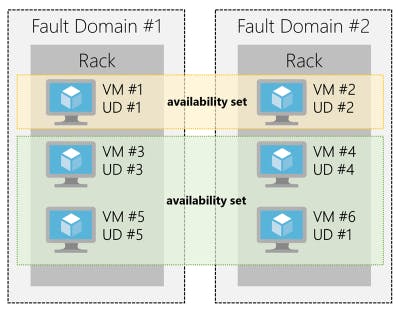 Availability set is a logical grouping capability for isolating virtual machines from each other, availability set spread VMS across multiple fault domains and updates domains thereby it provides redundancy to virtual machines.
Availability set is a logical grouping capability for isolating virtual machines from each other, availability set spread VMS across multiple fault domains and updates domains thereby it provides redundancy to virtual machines.
This architecture ensures if any hardware or software failure happens only the subset of VMS will be impacted but still, your overall solution will be in a safe and working condition.
The availability set protects the server from server rack failures whereas the availability zone protects from availability set failure and data from data center failure.
Virtualization
- virtualization is the key process in lowering the cost and using the resources at full capacity, wondering how?? let's see the below picture
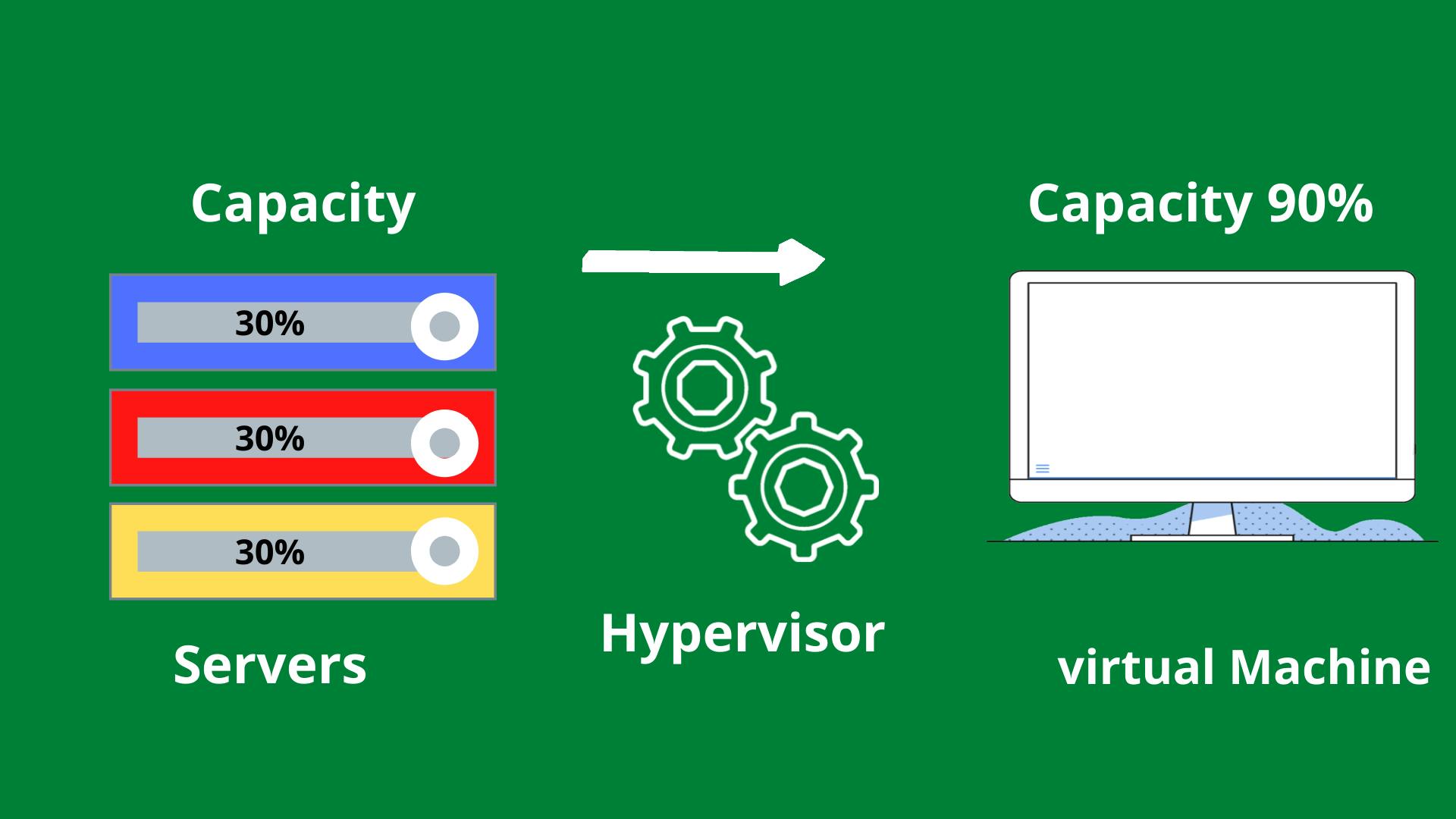
In the picture from the 3 different servers, only 30% of the capacity from each server are used so using virtualization one single virtual machine can be created which will provide the required 90% capacity. because in this process instead of providing the physical infrastructures like data centers emulation of computers of those resources are provided which are called virtual machines.
virtual machines
- Virtual machines are software emulations of physical computers. They include a virtual processor, memory, storage, and networking resources. VMs host an operating system, and you can install and run software just like a physical computer.
Hypervisor
A hypervisor is software that works as an interface between the hardware and virtual machines. It also manages the virtual machines.
How are the cloud services delivered?
Cloud services are often delivered to the customers (mostly enterprises) through cloud deployment models and service models based. These models are prepared on various aspects of the consumer like what level of control & security is required, how much workload requirement, and who are the end-users.
Deployment Models
Cloud resources can be deployed by any of the 4 models-
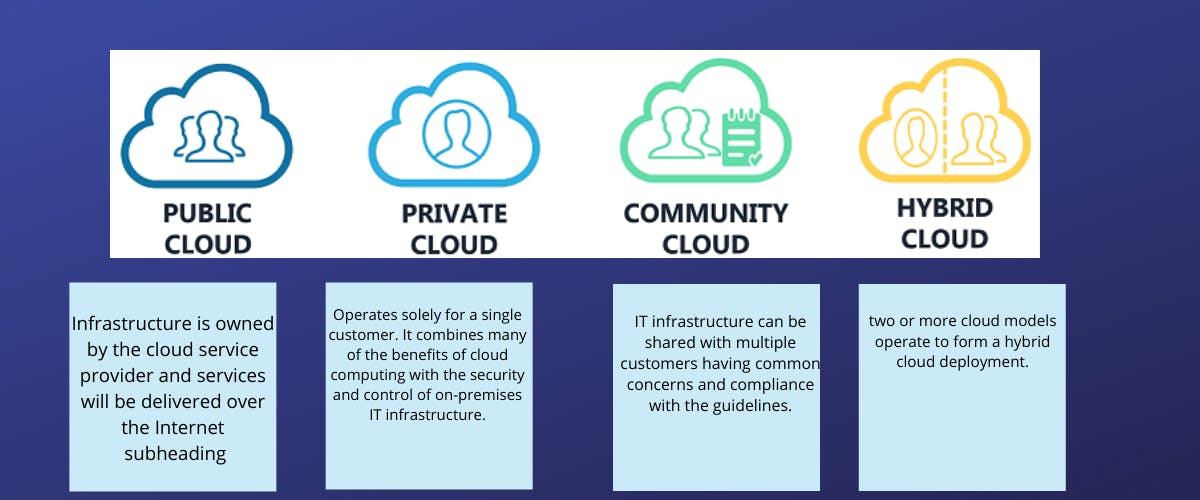
Cloud Service Models
Software as a service(SaaS)
services are offered as an application hosted by the cloud. Customers can access the application through a web browser or mobile devices and don't have the access to the backend. example- Microsoft Office 365, Google Apps, Microsoft Teams, slack channel
platform as a service(PaaS)
Customers have the full control over the application code example- App Cloud Salesforce.com, Google App Engine from Google Cloud Platform, OpenShift from Red Hat Inc, Oracle cloud platform from oracle.
Infrastructure as a service(Iaas)
- Customers can have remote access to the virtualized cloud infrastructure, control over the choice of OS and VM instances also can configure the development environment remotely. example- Elastic compute cloud from AWS, virtual machines from Azure.
Cloud service providers
- Cloud service providers are the companies who provide and maintain cloud infrastructures. some of them are Amazon Web Services (AWS), Microsoft Azure, Google Cloud, Alibaba Cloud, IBM Cloud, Oracle, Salesforce, SAP, Rackspace Cloud, and VMWare.
- However, the 3 major providers of cloud services are Azure, AWS, and Google cloud. the below image shows a high-level comparison between these 3
AWS VS Azure VS GCP
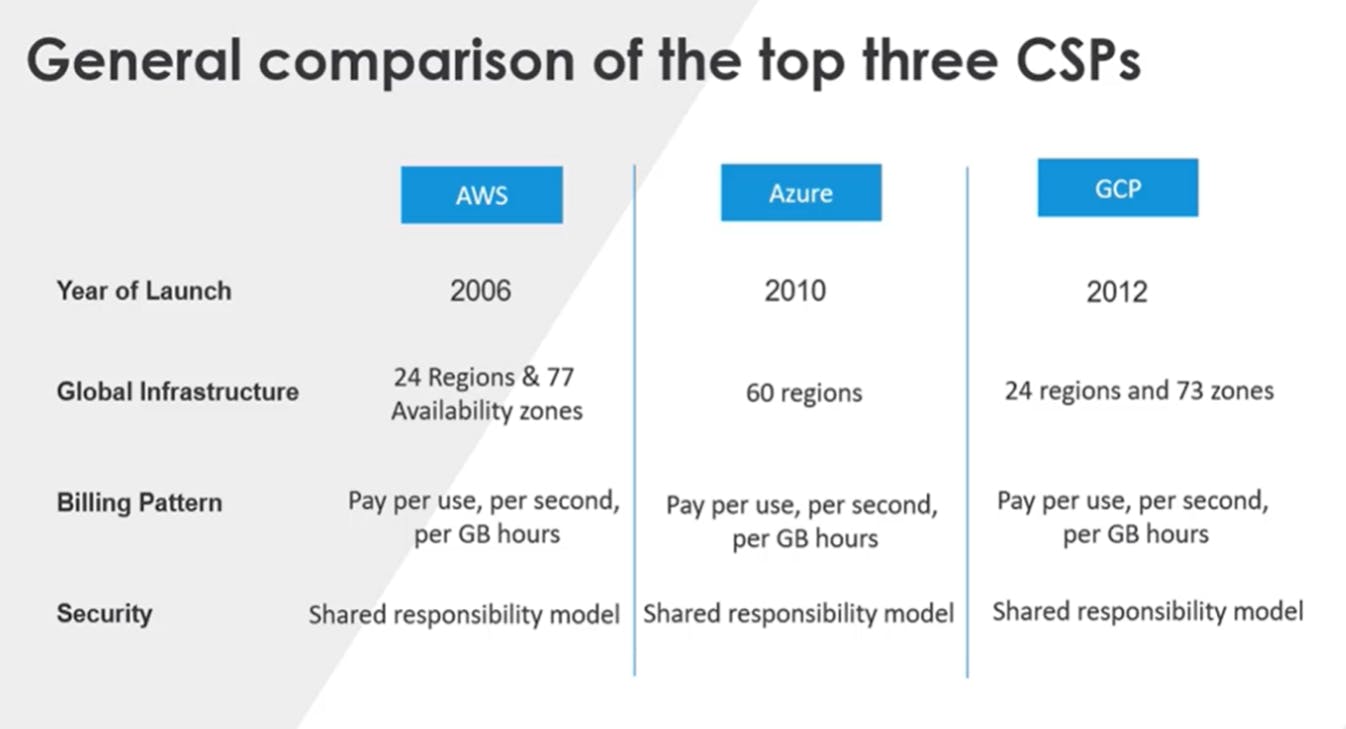
As I have mentioned cloud computing is a service utility or solution to the increasing demand with which we are moving forward.
Thank you for reading! I will happy to get your comments on this blog and to know what you feel about cloud computing.
#thw-cloud-computing #cloud-computing

